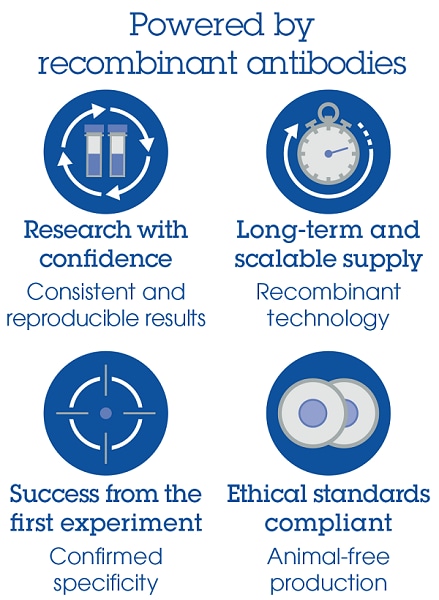Human Insulin ELISA Kit (ab278125)
Key features and details
- One-wash 90 minute protocol
- Sensitivity: 8.04 pmol/L
- Range: 13.28 pmol/L - 425 pmol/L
- Sample type: EDTA Plasma, Hep Plasma, Serum
- Detection method: Fluorescent
- Assay type: Sandwich (quantitative)
Overview
-
Product name
Human Insulin ELISA Kit
See all Insulin kits -
Detection method
Fluorescent -
Precision
Intra-assay Sample n Mean SD CV% Serum 8 9.4% Inter-assay Sample n Mean SD CV% Serum 3 11.8% -
Sample type
Serum, Hep Plasma, EDTA Plasma -
Assay type
Sandwich (quantitative) -
Sensitivity
8.04 pmol/L -
Range
13.28 pmol/L - 425 pmol/L -
Recovery
Sample specific recovery Sample type Average % Range Serum 96 94% - 98% Hep Plasma 89 80% - 97% EDTA Plasma 99 95% - 103% -
Assay time
1h 30m -
Assay duration
One step assay -
Platform
Microplate (12 x 8 well strips)
Properties
-
Storage instructions
Store at +4°C. Please refer to protocols. -
Components 1 x 96 tests 100X Stoplight Red Substrate 1 x 120µl 10X Human Insulin Capture Antibody 1 x 600µl 10X Human Insulin Detector Antibody 1 x 600µl 10X Wash Buffer PT (ab206977) 1 x 20ml 500X Hydrogen Peroxide (H2O2, 3%) 1 x 50µl Antibody Diluent CPI - HAMA Blocker (ab193969) 1 x 6ml Human Insulin Lyophilized Recombinant Protein 2 vials Plate Seals 1 unit Sample Diluent NS (ab193972) 1 x 12ml SimpleStep Pre-Coated Black 96-Well Microplate 1 unit Stoplight Red Substrate Buffer 1 x 12ml -
Function
Insulin decreases blood glucose concentration. It increases cell permeability to monosaccharides, amino acids and fatty acids. It accelerates glycolysis, the pentose phosphate cycle, and glycogen synthesis in liver. -
Involvement in disease
Defects in INS are the cause of familial hyperproinsulinemia (FHPRI) [MIM:176730].
Defects in INS are a cause of diabetes mellitus insulin-dependent type 2 (IDDM2) [MIM:125852]. IDDM2 is a multifactorial disorder of glucose homeostasis that is characterized by susceptibility to ketoacidosis in the absence of insulin therapy. Clinical fetaures are polydipsia, polyphagia and polyuria which result from hyperglycemia-induced osmotic diuresis and secondary thirst. These derangements result in long-term complications that affect the eyes, kidneys, nerves, and blood vessels.
Defects in INS are a cause of diabetes mellitus permanent neonatal (PNDM) [MIM:606176]. PNDM is a rare form of diabetes distinct from childhood-onset autoimmune diabetes mellitus type 1. It is characterized by insulin-requiring hyperglycemia that is diagnosed within the first months of life. Permanent neonatal diabetes requires lifelong therapy.
Defects in INS are a cause of maturity-onset diabetes of the young type 10 (MODY10) [MIM:613370]. MODY10 is a form of diabetes that is characterized by an autosomal dominant mode of inheritance, onset in childhood or early adulthood (usually before 25 years of age), a primary defect in insulin secretion and frequent insulin-independence at the beginning of the disease. -
Sequence similarities
Belongs to the insulin family. -
Cellular localization
Secreted. - Information by UniProt
-
Alternative names
- IDDM
- IDDM1
- IDDM2
see all -
Database links
- Entrez Gene: 3630 Human
- Omim: 176730 Human
- SwissProt: P01308 Human
- Unigene: 272259 Human
Images
-
SimpleStep ELISA technology allows the formation of the antibody-antigen complex in one single step, reducing assay time to 90 minutes. Add samples or standards and antibody mix to wells all at once, incubate, wash, and add your final substrate. See protocol for a detailed step-by-step guide.
-
To learn more about the advantages of recombinant antibodies see here.
-
The Insulin standard curve was prepared as described in Section 10. Raw data generated on SpectraMax M4 Multi-Mode Microplate Reader is shown in the table. Background-subtracted data values (mean +/- SD) are graphed.











